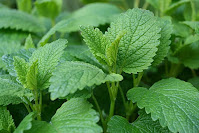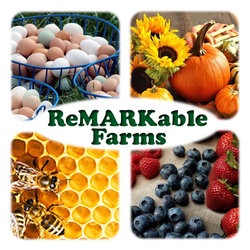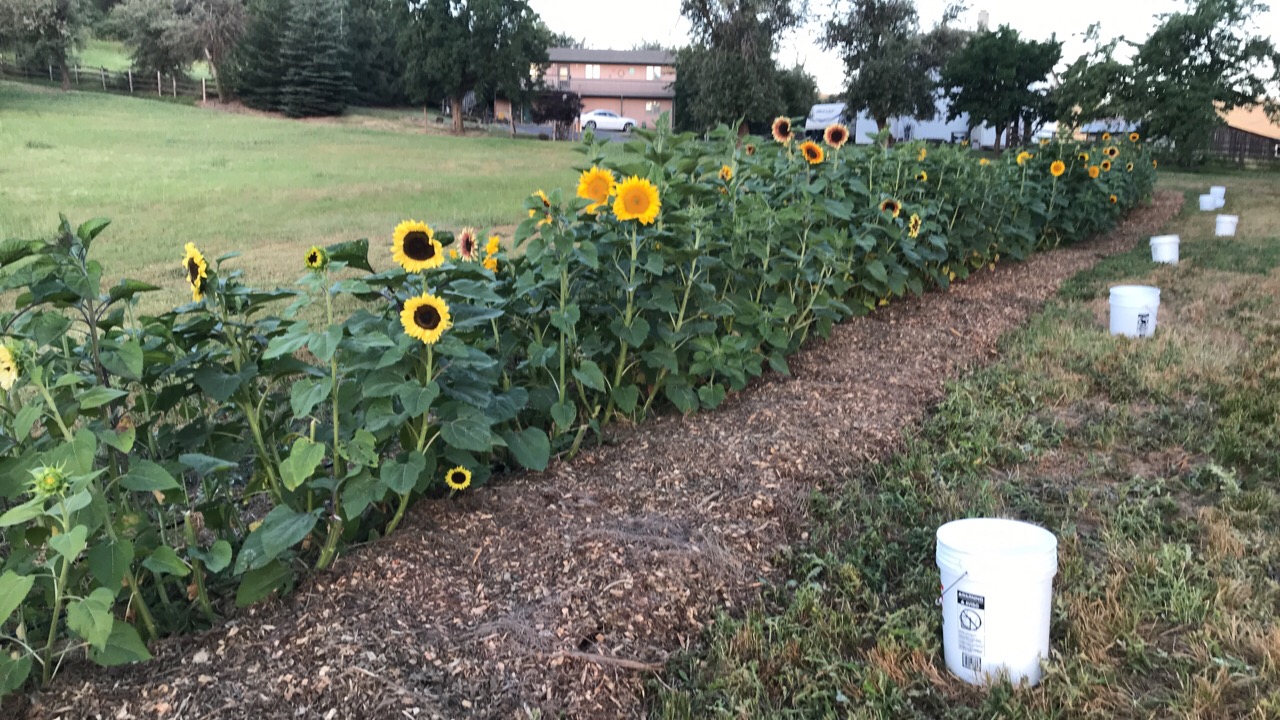Each summer, Mary comes to help collect and dry herbs and flowers from our garden. We feed some of these to the chickens and ducks in the winter. I have also been experimenting with making herbal salves. I did make a blog post about how I make the salves in March 2022 and you can read post by clicking on the title: Using Beeswax and Herbal Salves.

As a quick review, Mary picks and dries the herb/flower. Then, I take the dried herb and put it in a jar with a carrier oil. I was using olive oil but now I am switching to avocado oil. This may change again…we will see. Here is a jar of yarrow flowers and leaves in oil.

I let it sit for 6 weeks and then strain out the leaves and flowers and then you have an “infused oil”. This is where the magic lives! You add some beeswax to “thicken” the oil into a salve. I don’t add any essential oils to the salves because I want the natural herbal properties of the plant to shine. Beeswax is also great for your skin because it is a wax and forms a protective barrier when applied to skin. This protective barrier not only locks in moisture, but it also helps to keep out environmental assaults like wind and dry air.

Okay, so today I am just going to list out some of the salves I have made this past winter. I am not sure I will continue all of them. I am just experimenting to see what works and what does not. Unfortunately, everyone is different so you have to try different salves to see what works for you. For example, I had a terrible pain in my shoulder and I would put comfrey salve on my shoulder every morning for like 2 weeks and it was still hurting. Then, one day, I decided to try some of the Calendula salve and the pain went away that day! Another example is that I made a pine mint headache salve. I tried it when I had a headache but nada. One morning my stomach was hurting. It felt kind of like I was bloated and it just really hurt. I was drinking some peppermint tea because I had read that it can be soothing for you stomach. I saw the pine mint headache salve on my nightstand and figured, what the heck, I spread it all over my stomach and the pain went away almost immediately. I had been dealing with the pain for hours!
Here are some of the salves I have made:

Calendula
I think this one is my favorite! Calendula works its magic by promoting cell repair and growth, coupled with natural antiseptic, anti-fungal, and anti-inflammatory properties. It is gentle in its work…you don’t need to worry about “overdoing it” with calendula. Topically, calendula salve can ease, heal, or otherwise treat a huge array of skin conditions. According to the Chestnut School of Herbs, this includes: rashes, sunburn, swelling, eczema, acne, stings, wounds, burns, scrapes, chicken pox, and cold sores. As I mentioned above, calendula works great for my muscle pain!

Echinacea
This is a new one that I just made this past week so I have not had time to really try it yet. I did make some chap stick with echinacea infused oil because I had read that it is so good for dry skin! Salve made with dried echinacea flowers and leaves is good for treating wounds, stings and venomous bites. It helps calm, soothe and heal redness, cuts, rashes, bug bites, itches and scratches.

Comfrey
Comfrey has been shown to reduce inflammation, reduce pain, and speed skin healing. It is so good at skin healing that you should NEVER use comfrey on an open wound! You can use any other salve on an open wound but not comfrey! It contains allantoin, a substance believed to promote healing by stimulating the growth of new cells. Herbalists commonly recommend comfrey salves for sprains, strains, muscle pain, arthritis, bruises, and fractures.

Chamomile
Chamomile has been used for wound healing, including ulcers and sores, easing skin conditions like eczema or rashes and anti-inflammation and pain relief for conditions like back pain, neuralgia, or arthritis. Because chamomile is rich in antioxidants, flavonoids, and nutrients, it’s really good at soothing and relieving skin irritation.

Yarrow
Yarrow is know for it’s blood coagulating properties when applied to the skin to stop bleeding. Use it to treat minor topical injuries, including cuts, scrapes, burns, and rashes. Yarrow has powerful anti-inflammatory, anti-itching, anti-bacterial, and wound healing properties to reduce signs of skin aging, ease inflammation and increase skin moisture.


Pine Mint
Mint helps to calm down inflammation, and pine is said to have pain-relieving properties so putting these two powerhouses together makes for an effective salve. Use for headaches or any other muscle pain. As I mentioned above, my stomach was hurting one day and I grabbed this salve and spread it on and the pain went away almost immediately!

Catnip
Along with its calming and anti-inflammatory compounds, catnip has antiseptic properties that make it useful for treating skin infections and speeding the healing of minor wounds and cuts and other skin problems.

Lemon Verbena
Heals dry or cracked skin and cuticles after a long day of gardening. Lemon verbena has proven to be effective in healing dry elbows, knees, heels, hands and cuticles. Just a heads up…although the plant smells very “lemony”, that does not carry through to the salve so don’t expect it to smell like lemon.
Future salves I would like to make:

Lavender
Lavender salve moisturizes skin, soothes irritation, burns and itching, and can even help heal acne, scrapes, and eczema and soften the appearance of scars. It can be used after shaving, to prevent or treat razor burn swelling, redness, and irritation. Lavender is generally safe for kids and babies, making homemade lavender salve perfect for things like diaper rash or cradle cap.

Lemon Balm
Lemon Balm cools and soothes irritated or inflamed skin. It can be used on cuts, scrapes, wounds, and insect bites. Lemon balms contains some anti-viral properties and is a natural way to help heal herpes, cold sores, shingles, and other viral skin conditions.

Rosehip
Rosehip oil is extremely high in essential fatty acids and is a great agent in the fight against dry, weathered, and dehydrated skin. It works wonders on scars and is used for treating wrinkles and premature aging and age spots.
So, that is that…I like the idea of making the salves in the winter because they will be shelf stable and I can take them to the Farmer’s Market in the spring when I don’t have flowers yet to sell! I guess I should show you a pic of the finished product…


